With the season around the corner, we'll be posting a series of position-by-position writeups this week to get you familiar with some of the top players in the college fantasy football landscape. We broke down the quarterback landscape earlier and will keep things rolling with the running backs today. There isn't a Saquon Barkley-level talent this year, but there are plenty of familiar names back in the fold with astronomical expectations, such as Stanford's Bryce Love. Leading the way is Florida Atlantic's Devin Singletary, who scored more touchdowns from scrimmage than 23 FBS teams in 201 and shows little signs of slowing down in 2018.
To see our growing list of projections for over 850 players, including kickers, click here.
Devin Singletary FAU
Focal point of one of the best offenses in the nation: Check. Going up against awful defenses every week: Check. Singletary's talent mixed with those factors make him a force to be reckoned with. He ripped off 1,920 yards and 32 rushing scores -- numbers that haven't been put up since Montee Ball's Wisconsin days in 2011. It'll obviously be tough to top his historic 2017, but Singletary's role is ironclad and his nose for the end zone is unmatched. FAU's improved quarterback situation might lead to a more balanced offense, but Singletary is still RB1.
Jonathon Taylor WISCONSIN
Coming off a stellar freshman campaign in which he emerged from the pack to rush for 1,977 yards, breaking Adrian Peterson's freshman rushing record,
With the season around the corner, we'll be posting a series of position-by-position writeups this week to get you familiar with some of the top players in the college fantasy football landscape. We broke down the quarterback landscape earlier and will keep things rolling with the running backs today. There isn't a Saquon Barkley-level talent this year, but there are plenty of familiar names back in the fold with astronomical expectations, such as Stanford's Bryce Love. Leading the way is Florida Atlantic's Devin Singletary, who scored more touchdowns from scrimmage than 23 FBS teams in 201 and shows little signs of slowing down in 2018.
To see our growing list of projections for over 850 players, including kickers, click here.
Devin Singletary FAU
Focal point of one of the best offenses in the nation: Check. Going up against awful defenses every week: Check. Singletary's talent mixed with those factors make him a force to be reckoned with. He ripped off 1,920 yards and 32 rushing scores -- numbers that haven't been put up since Montee Ball's Wisconsin days in 2011. It'll obviously be tough to top his historic 2017, but Singletary's role is ironclad and his nose for the end zone is unmatched. FAU's improved quarterback situation might lead to a more balanced offense, but Singletary is still RB1.
Jonathon Taylor WISCONSIN
Coming off a stellar freshman campaign in which he emerged from the pack to rush for 1,977 yards, breaking Adrian Peterson's freshman rushing record, Taylor enters 2018 unchallenged atop the depth chart. Taylor possesses a nice blend of power and speed, but he can struggle holding onto the football at times, losing eight fumbles last season. If he can quash those concerns and his offseason work to improve as a pass-catcher pays off, the sophomore could prove a true three-down workhorse and a trip to New York for the Heisman ceremony may be in the cards.
Bryce Love STANFORD
Love needs no introduction after averaging 8.05 yards per carry over 263 carries to become Stanford's latest 2,000-yard rusher. He's the best big-play threat in college, having set an NCAA record with 13 runs of at least 50 yards in 2017. Love also gets the luxury of running behind an offensive line littered with four- and five-star talent. The only question here is durability. While an ankle injury only caused him to miss one game, it bothered Love down the stretch. If Love is healthy for 12 games, he'll be the odds-on favorite to lead the nation in rushing.
Rodney Anderson OKLAHOMA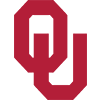
Baker Mayfield's departure means the running game might be more featured in Norman this year. Kyler Murray and a deep stable of backs will absorb carries, but it's easy to forget that OU had a 55:45 Run:Pass split last year. That means there's enough carries to go around and still make Anderson a fantasy force. Anderson needed just 188 carries to get 1,161 yards and 13 scores last year--and he only saw 12 carries in the first five weeks. Extrapolate his average workload down the stretch (19.5 Att/Gm) and we get 1,502 yards and 16 TD. That'll play.
Benny Snell KENTUCKY
The SEC's top returning rusher could end the year as Kentucky's all-time leading rusher if he continues on his current trajectory. Snell (5-11, 223) ran for 1,333 yards (5.1 YPC) and racked up an SEC-best 19 touchdowns in 2017. He's a physical force that doesn't only put up numbers against lesser foes; in fact, Snell had a higher YPC mark against SEC foes (5.16) than he did against non-conference opponents. That level of consistency is extremely valuable, and when you combine his skills with an ironclad workload, Snell projects as an elite RB1 option.
AJ Dillon BOSTON COLLEGE
Boston College is a run-first program, but the Eagles don't always have a running back with Dillon's talent. Dillon went from being an under the radar recruit to the ACC's most productive running back in a span of months, rushing for 1,589 yards and 14 TDs. An absolute unit at 6-foot, 240, Dillon is too difficult for most defenders one-on-one and he has just enough long speed to rip off big runs once he gets to the open field. He'll push for 300 carries once again, and that level of volume for a player of Dillon's skill level makes him a premium asset in 2018.
Myles Gaskin WASHINGTON
It feels like Gaskin has been at Washington since the Jake Locker days but he's back for another round in 2018. He's rushed for at least 1,300 yards in each of his three seasons at UW, but Gaskin showed another gear as a fantasy asset last year with 21 rushing touchdowns. While it'll be difficult to replicate that touchdown production this year as touchdowns tend to be unstable year over year, he still has a safe workload and it'd be surprising if he was held under 1,200 yards or held to single-digit touchdowns.
Justice Hill OKLAHOMA STATE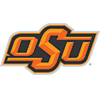
Hill played in the most prolific passing offense in the nation in 2017 and still managed to lead the Big 12 in rushing with 1,467 yards (5.47 YPC) and 15 TDs. Mason Rudolph's departure along with the losses at receiver give the Cowboys a new-look depth chart. The quarterback situation is of particular interest; the 'Pokes are still going to be pass-first, but Hill might see even more work to take the pressure off the QB. With Hill's explosive skill set and implied volume going against weak Big 12 run defenses, he's an early round target this year.
J.K. Dobbins OHIO STATE
Dobbins exploded onto the scene as a true freshman for the Buckeyes in 2018, rushing for over 100 yards on six different occasions including three of the last four games. Junior Mike Weber will undoubtedly receive his fair share of looks in the backfield as well, but Dobbins proved he could do more with his touches, averaging 7.5 yards per carry en route to 1,364 rushing yards and seven touchdowns. While the offense will likely resemble more of a pro-style look with Dwayne Haskins under center, it should also stretch the field with defenses respecting the pass more.
Juwan Washington SAN DIEGO STATE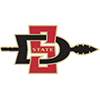
Washington appears to be the next big thing for the Aztecs. You would normally worry about a limited workload when talking about a 5-foot-7, 190-pound back, but this is the same school that rode the even smaller Donnel Pumphrey to 1,158 touches in 54 games. That means there should be a real workhorse role available for Washington, whose explosiveness is obvious after averaging 6.6 yards per carry and scoring three times on kick returns over the last two years. Even if Washington is only sixty percent as productive as Rashaad Penny, that's still a star runner.
Jalin Moore APPALACHIAN STATE
Moore starts for one of the most run-heavy offenses in the nation and the Mountaineers may need to lean on him even more in 2018 with four-year quarterback Taylor Lamb gone. He had an injury that dialed his workload back from 237 carries to 183 carries, but if Moore stays healthy, he'll push for his 2016 carry total. Moore has track record of sustained success, averaging 5.8 YPC in 420 carries over the last two years. There may not be a ton of room for improvement, but Moore is a safe and reliable option at running back with a guaranteed workload.
David Montgomery IOWA STATE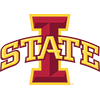
Iowa State's offense skews toward the passing game, but that doesn't stop Montgomery from being a significant producer. He took 258 carries for 1,146 yards and 11 scores and was a prolific pass catcher with 36 grabs on 48 targets. Montgomery is unchallenged in the ISU backfield, having accounted for 67 percent of the Cyclones' running back rushes. He'll be facing mostly porous Big 12 run defenses, so Montgomery could surpass his middling 4.4 YPC from 2017 while pushing for 300 total touches. The workload and potential for improvement make him a top tier RB.
Spencer Brown UAB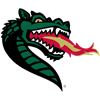
Brown (6-0, 235) bullied his way to 1,329 yards and 10 touchdowns as a freshman last season and comes into this year as one of the top Group of Five running backs. He's an unquestioned workhorse -- no other UAB back saw more than 54 carries -- in an offense that runs the ball over 58 percent of the time. With that, Brown is a high floor back and the fact that he's going against porous Conference USA defenses gives him a good ceiling, too. The only downside is that he could get some touchdowns poached by quarterback A.J. Erdely, who punched in 13 scores last year.
Jonathan Ward CENTRAL MICHIGAN
Ward's phenomenal end to the season, highlighted by 71 carries for 528 yards and five scores in four November games, gives a glimpse at what he can do as the featured back. He also has very little competition for carries; no other CMU back had more than 54 rushes last year and neither of the other 50-plus-carry rushers averaged 4.0 YPC. Ward has speed unlike most other MAC backs with an array of moves to make defenders look foolish, and he'll be running behind an experienced line. His combination of skill and team context makes him a worthwhile target.
Zack Moss UTAH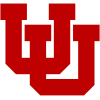
Moss earned the starting role for the Utes in 2017 and thrived with the increased opportunity, rushing for 1,173 yards and 10 touchdowns. His role remains safe heading into this year, which means he's got another heavy workload on tap. Moss has a solid skill set and plays in an offense with well-designed run concepts. He also has the ability as a pass catcher to stay on the field for three downs, having caught 29 of 38 targets for 243 yards last year. Look for Moss to be a reliable producer on a weekly basis.
Alexander Mattison BOISE STATE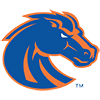
Mattison wasn't expected to match the feats of Jeremy McNichols, but his first season as a starter for was nonetheless a bit underwhelming. He took 14 games to get to 1,086 yards and 12 touchdowns rushing, finishing the year with a 5.1 YPC average. That was largely buoyed by a fluky 242-yard, three-touchdown game against Colorado State. Mattison otherwise surpassed 100 yards just three times, and finished with 50 or fewer rushing yards five times. Mattison has three fifths of his line back and could improve with experience, but he's not a must-start against good defenses.
Patrick Taylor MEMPHIS
While the Memphis offense as a whole could be in for regression as it reels from the loss of the star quarterback-wideout tandem of Riley Ferguson and Anthony Miller, Taylor is one half of a Tiger backfield that figures to drive them through the storm. The explosive Darrell Henderson is the lightning of the backfield, while Taylor is turned to for the physicality he provides at 6-foot-3, 223 pounds. After posting 866 yards (5.5 YPC) and 13 touchdowns in 12 games last year, Taylor could see more carries as Memphis tries to replace Miller's 1,462 yards and 18 touchdowns.
Andrew Clair, BOWLING GREEN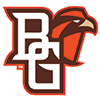
Clair quietly put together one of the best rushing seasons of any MAC back, and what's more impressive is he was a true freshman working in a timeshare with a senior. He needed just 107 carries to run for 725 yards and four TDs. The opportunities will be on the upswing with vet Josh Cleveland gone and the presumption that Bowling Green is heavily pass-first is false with Dino Babers entering his third year at Syracuse. Clair will be a featured back in a balanced offense and his big-play ability (22 percent of his runs went for 10-or-more yards) boosts his ceiling.
Shamari Brooks TULSA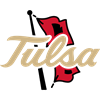
Last year was a remarkable letdown for Tulsa, as it finished 2-10 after going 10-3 in 2016, but Brooks was one bright spot. Before a broken collarbone ended his season after nine games, Brooks raced to 687 yards and 10 touchdowns on 119 carries, good for 5.8 yards per attempt. While the Golden Hurricane returns most of its recognizable names on offense, one notable exception is the now graduated D'Angelo Brewer, whose exit all but assures a big promotion for Brooks after Brewer saw more than 20 carries per game over the last two years.
Eno Benjamin ARIZONA STATE
Between Demario Richard and Kalen Ballage's departures, there are upwards of 355 carries up for grabs in Tempe. Enter Benjamin, who was the top recruit in ASU's 2017 class and justified the hype when given the chance. Benjamin saw just 23 carries but averaged 6.1 YPC while showing tremendous leg drive and explosiveness. It's difficult to tell what Herm Edwards will do with the offense, but it's safe to say he won't abandon the run. Benjamin will enter the year as the starter and has a chance to be a top-tier PAC-12 back despite a lack of track record.
Cam Akers FLORIDA STATE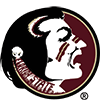
Akers was anointed as the next great FSU running back before he got to campus and his strong 2017 suggests he can reach that level. The uber-talented Akers instantly took the top role and ran for 1,025 yards and seven TDs. Florida State will be installing a run-heavy system under Willie Taggart that incorporates spread concepts to stress defensive fronts in a way that Jimbo Fisher's pro scheme didn't. This means that not only is Akers physically ready to take his game to another level, but he'll also be put in more situations to rip chunk yardage. Look out.
Travis Etienne CLEMSON
What Etienne did on just 107 carries as a freshman is remarkable. He averaged 7.16 yards per carry and racked up 13 touchdowns, which matched what Wisconsin's Jonathan Taylor posted with 192 more carries. This isn't a knock against Taylor as much as it is a credit to Etienne's explosiveness. He may well be the fastest running back in the nation and has the build to hold up with an increased workload. Clemson's backfield depth does put a cap on Etienne's expected volume, but his talent makes him worth targeting nonetheless.
D'Andre Swift GEORGIA
This may seem like a low ranking, but there's a rationale behind it. Yes, Georgia will have a strong run game and yes Swift showed plenty of promise as a freshman, but context is needed here. Georgia's backfield is loaded to where it doesn't need to lean on one back for all of its production. Elijah Holyfield, Brian Herrien, and even freshman Zamir White will all command carries to spell Swift. Still, Swift is lined up to be Georgia's starter and will be running behind one of the top offensive lines in the nation. Swift projects as one of the SEC's top rusher.
Patrick Laird CALIFORNIA
Laird owned 11 total carries entering the 2017 season. While he doesn't possess the top end speed to run away from cornerbacks, Laird proved during his junior campaign to possess the shiftiness, burst and power to serve as an effective runner for the Bears, averaging 5.9 yards per attempt and finding paydirt eight times. Laird's biggest asset, perhaps, is his ability to catch the ball out of the backfield. The six-foot, 200-pound tailback nabbed 45 passes last season and should be a reliable pair of hands for quarterback Ross Bowers again in 2018.
Trey Ragas LOUISIANA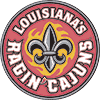
One of the top returning rushers in the Sun Belt is looking to build on an excellent freshman season. Ragas broke out with 142 carries for 813 yards and nine scores and no other returning running back on ULL had more than 42 carries in 2017. That shows the type of hold Ragas has on the workload in Lafayette, and at 5-foot-11, 227 pounds, he's simply too much for most Sun Belt defenses to handle. He also plays in an offense that runs it well over 50 percent of the time, so the volume floor is stable as well. 1,000 yards is well within reach for Ragas in 2018.
Damien Harris ALABAMA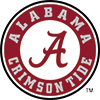
The bad news is that Harris is unlikely to ever see a big workload for an Alabama squad that frequently plays with big leads and always boasts a loaded backfield. The good news is that he doesn't need a big workload to be productive. Harris averaged more than 7.0 YPC for the second year in a row in 2017, but he will have to fend off former top recruit Najee Harris for the lead role. Perhaps Nick Saban will save most of the red-zone work for Harris as a reward for his loyalty to the program, offsetting modest yardage from scrimmage with a high touchdown rate.
Aeris Williams MISSISSIPPI STATE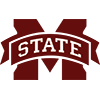
He's not flashy, but it's hard to argue against Williams' workload and reliable production. Williams (6-1, 217) had 1,107 yards and six scores while adding 16 grabs on 23 targets. He should see more passing game work this year with Joe Moorhead -- the architect of Penn State's Saquon Barkley-led offenses -- entrenched as the head coach in Starkville. While matching Barkley's production is an unfair expectation, it's still fair to be bullish on Williams, especially if Moorhead funnels more red zone carries to him to take the pressure off Nick Fitzgerald.
Darius Anderson TCU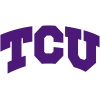
He might not be a full workhorse with Sewo Olonilua garnering carries, too, but Anderson will be featured plenty after exploding on the scene with 128 carries for 768 yards and eight touchdowns in 2017. Anderson can slash inside the tackles and also bounce it outside for big gains, and when he draws weak Big 12 run defenses, he's a handful.. Furthermore, Kyle Hicks' departure opens up more carries for Anderson, and quarterback Shawn Robinson's running ability will keep defenses honest on RPOs and help open running lanes.
Trayveon Williams TEXAS A&M
Williams' rushing average dropped from 6.8 YPC he posted as a freshman to 4.6 YPC last year, but the general sense is that decline was mostly due to surrounding circumstances. The A&M program was in a bit of a tailspin toward the end of the Kevin Sumlin era, and the hope is that new coach Jimbo Fisher can right the ship and reestablish the team's run game. After seeing 173 carries in 12 games last year, Williams should see more opportunities with Keith Ford (139 carries, 12 touchdowns) graduated, and that A&M returns an experienced squad also helps
Ty Johnson MARYLAND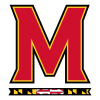
After running for 1,004 yards and six touchdowns on just 110 carries in 2016 (9.1 YPC), Johnson was only able to turn 137 carries into 875 yards (6.4 YPC) and five touchdowns in 2017. As much as someone might frame that showing as a disappointment, it looks more impressive upon inspection. Maryland's offense was ravaged by quarterback injuries and, as a result, instability generally, so Johnson's average of 6.4 yards per carry is more than good. Johnson is unlikely to see a big workload at Maryland, but a return to his 2016 form is the general expectation.
Tony Jones NOTRE DAME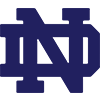
Jones didn't see a ton of action behind Josh Adams last season, but he turned 44 touches into 232 yards (5.27 YPC) and three scores. With Adams gone and Deon McIntosh dismissed from the program, 271 carries from last season are up for grabs between Jones and Dexter Williams. The Irish will undergo major turnover up front with four of the starting lineman from last season -- including first-rounders Quenton Nelson and Mike McGlinchey -- out of the picture, but the running game could be leaned on again given the team's inconsistent play under center last season.
Travis Homer MIAMI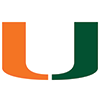
A crowded backfield in a low tempo offense might limit Homer's upside somewhat, but he's poised to be one of the most productive running backs in his conference at the least. He broke out as a true sophomore last year, stepping in for the injured Mark Walton for nine weeks while totaling 966 yards (5.9 YPC) and eight touchdowns in 13 games. The question of Homer's ceiling probably comes down to whether he can hold off five-star freshman Lorenzo Lingard. If Lingard averages more than five carries per game, then Homer might be left with an average of only 15 or so.
Lexington Thomas UNLV
Thomas was quietly one of the top rushers on a per-game basis last season, averaging 111.3 yards per game en route to a 1,336-yard season that featured 17 touchdowns. He's back for his final season and will be the focal point of an offense that ran it 61.5 percent of the time in 2017 -- good enough for 25th in the nation. It's fair to carry some concerns regarding Thomas' durability as an undersized back, but he held up well to 211 carries last year. Furthermore, quarterback Armani Rogers dual threat ability helps prevent defenses for keying solely on Thomas.
Adrian Killins CENTRAL FLORIDA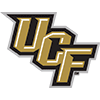
At a listed 5-foot-8, 155 pounds, Killins likely isn't a workhorse candidate at running back, but he's the most explosive runner in an offense that should remain uptempo and effective with Josh Heupel arriving to offset the loss of coach Scott Frost. Killins only needed 122 carries to total 790 yards (6.5 YPC) and 10 touchdowns last year, and that rushing average was nearly three yards per carry more than the next two ranking UCF running backs. Killins' explosiveness in an uptempo scheme gives him a useful floor even if his ceiling is limited.
Brittain Brown DUKE
Brown was the best running back on the roster last year but Shaun Wilson's presence led to the Blue Devils having a true running back committee. Wilson is off to the NFL, meaning Brown is ready to take on the lead role after rushing for 701 yards with 5.39 yards per carry and seven scores. Brown (6-1, 200) has nice short area quicks last year but also runs hard and breaks tackles. Daniel Jones' rushing ability from the quarterback spot will result in some vultured touchdowns for Brown, but Brown is well built enough to garner goal line work in his own right.



























